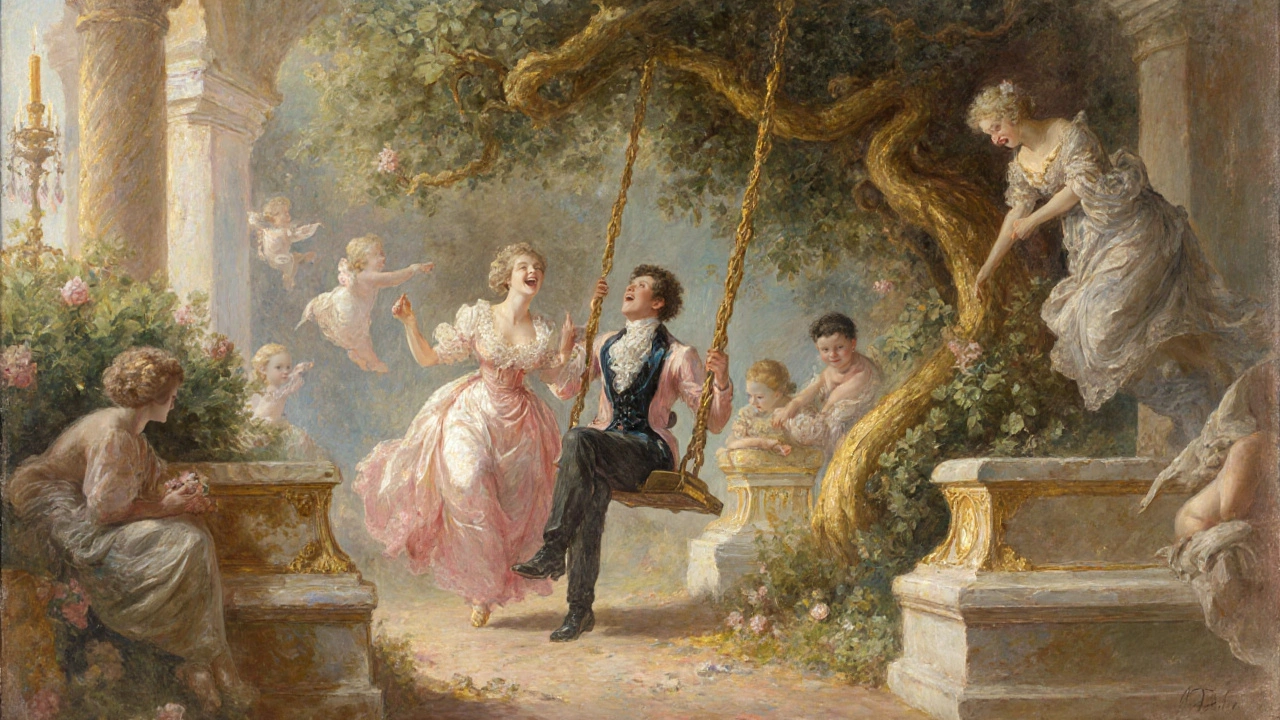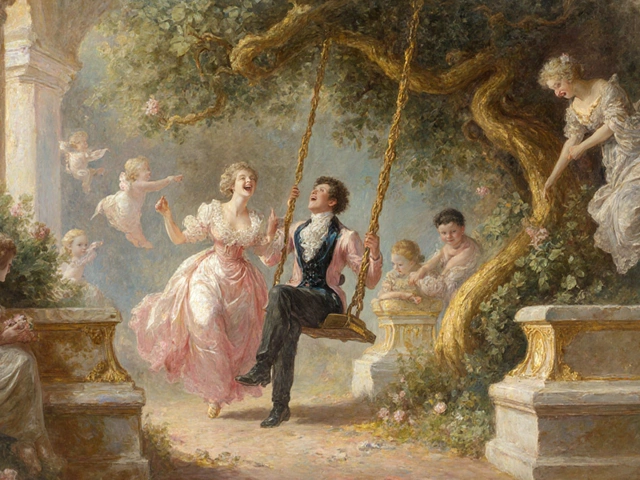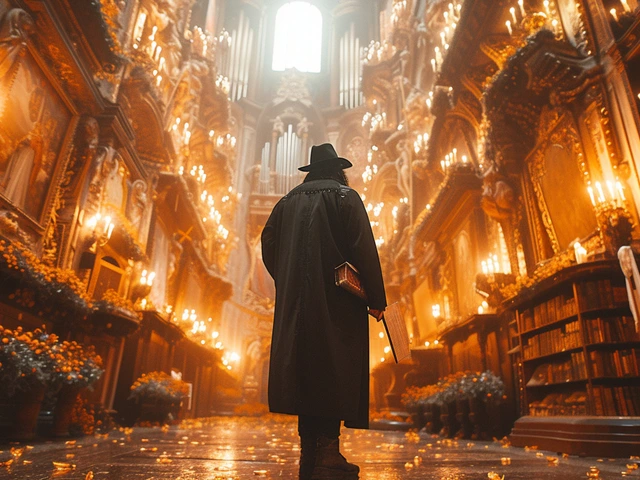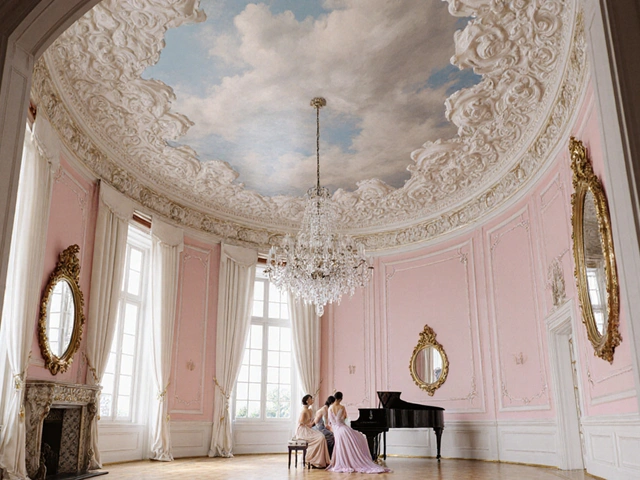Rococo wasn’t just a style-it was a mood. It emerged in early 18th-century France as a reaction against the heavy grandeur of Baroque. Where Baroque shouted with marble columns and dramatic lighting, Rococo whispered in pastels, curves, and gilded whispers. It didn’t aim to inspire awe or fear. It wanted to delight. To seduce. To make you feel like you’d stepped into a garden painted by a dreamer who’d had too much champagne.
Where Rococo Came From
Rococo began in Paris around 1715, right after the death of Louis XIV. His reign had been all about power-massive palaces, rigid symmetry, and statues of kings as gods. When he died, the court moved from Versailles to Paris, and so did the art. The new generation-nobles, artists, and salon hostesses-wanted something lighter. Something more personal. Something that felt like a private party, not a state funeral.
The term ‘Rococo’ comes from the French word ‘rocaille,’ meaning rockwork or shellwork. That’s exactly what you see in the decoration: swirling shells, twisted vines, C-curves, and asymmetrical flourishes. It wasn’t designed for public squares or cathedrals. It was made for boudoirs, salons, and country villas. Think of it as interior design with a sense of humor.
The Look: Pastels, Gold, and Playfulness
Rococo didn’t use bold colors. It used blush pink, mint green, baby blue, and ivory. These weren’t just pretty-they were intentional. They created a sense of softness, of intimacy. Add to that a thick layer of gold leaf, and you had the perfect recipe for visual sugar.
Paintings looked like they were lit by candlelight. Figures floated in airy landscapes. Women in silk dresses leaned against marble benches, holding fans like props in a romantic comedy. Men in lace cravats smiled with just the right amount of mischief. There was no war, no plague, no politics. Just pleasure.
Jean-Antoine Watteau started it. His painting Embarkation for Cythera (1717) showed aristocrats floating toward a mythical island of love. It wasn’t mythology-it was fantasy. A wish list for the idle rich. Then came François Boucher, who painted nudes as if they were porcelain dolls. And Jean-Honoré Fragonard, whose The Swing (1767) captured a moment of flirtation so perfectly, you can almost hear the rustle of silk and the giggle behind the bush.
Rococo in Architecture and Interior Design
It wasn’t just paintings. Rococo transformed entire rooms. Ceilings curved like seashells. Walls were covered in stucco vines that seemed to grow into the air. Mirrors weren’t just for checking your reflection-they were tools of illusion, doubling the light, multiplying the beauty.
The Salon de la Princesse in the Hôtel de Soubise in Paris is a textbook example. Every surface is carved, gilded, or painted. No flat wall survives. No corner is left plain. It’s like walking into a cake made of gold and lace.
In Germany and Austria, Rococo got even wilder. The Wieskirche in Bavaria looks like a church designed by a pastry chef. White stucco angels float above curved altars. Gold vines climb the walls like ivy. Even the pews feel like they’re made of whipped cream.
Even furniture changed. Chairs became lighter, legs curved like swan necks. Tables had marble tops that looked like frozen ponds. Cabinets were decorated with marquetry of flowers and birds. Everything was made to be touched, admired, and enjoyed-not stored away or feared.
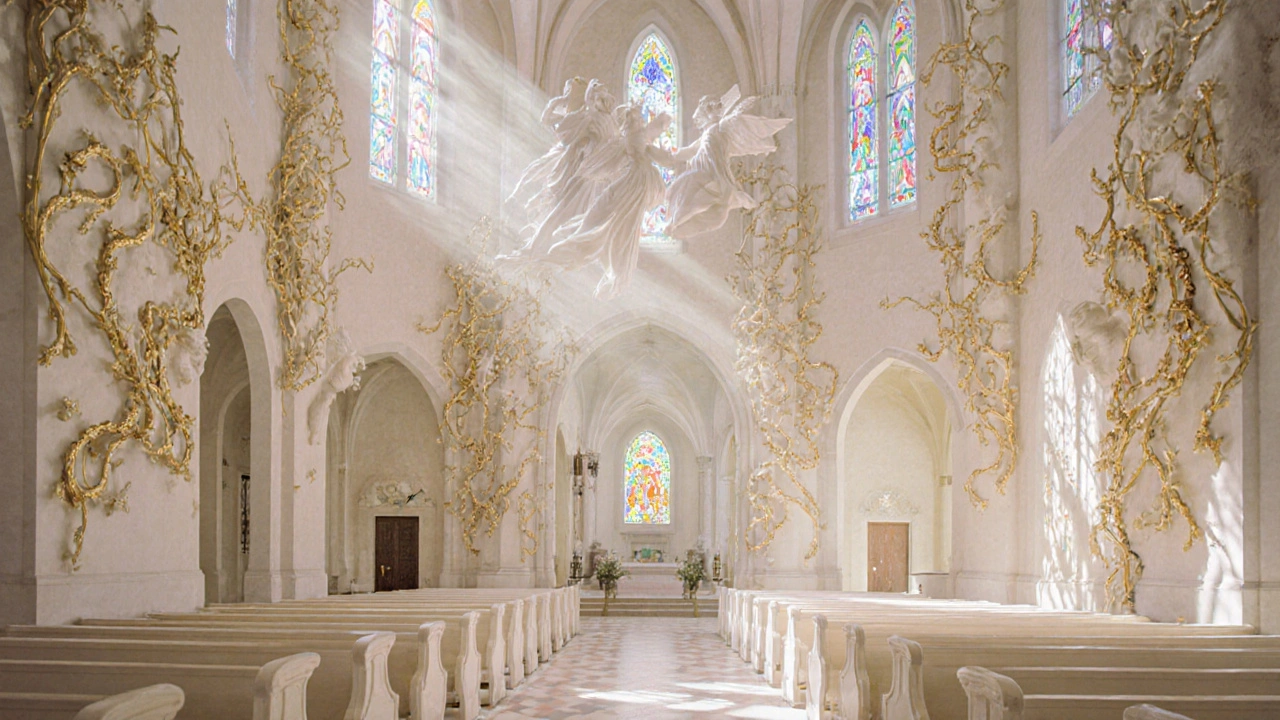
Why Rococo Fell Out of Favor
By the 1760s, things started to shift. The Enlightenment was in full swing. Thinkers like Voltaire and Rousseau were questioning monarchy, religion, and luxury. The French Revolution was brewing. All that gilded frivolity started to look like a crime.
Neoclassicism rose as the new ideal. It looked back to ancient Greece and Rome-clean lines, marble statues, moral seriousness. Where Rococo was soft, Neoclassicism was hard. Where Rococo was playful, Neoclassicism was solemn. The revolutionaries didn’t just want to overthrow the king. They wanted to erase the culture that made him feel immortal.
By 1790, Rococo was seen as decadent. It was mocked as ‘feminine,’ ‘frivolous,’ and ‘wasteful.’ Artists who once earned royal pensions were left struggling. The style didn’t die overnight, but it lost its voice.
Rococo’s Hidden Legacy
But here’s the twist: Rococo never really disappeared. It just went underground.
Modern interior design still loves its curves. Think of the curved sofas in boutique hotels, the pastel walls in Instagrammable cafés, the gold accents on minimalist lamps. That’s Rococo whispering in your ear.
Fashion designers like Jean Paul Gaultier and Alexander McQueen pulled from Rococo’s love of excess. Corsets, lace, ruffles, and embroidery? All echoes of 18th-century salons.
Even Disney got it. The ballroom in Beauty and the Beast? That’s pure Rococo. The chandeliers, the floral moldings, the way the light catches the gold-it’s not Gothic. It’s not Victorian. It’s Rococo, dressed up for a fairy tale.
And today, museums fight to preserve it. The Louvre, the Wallace Collection in London, the Frick Collection in New York-they don’t just display Rococo art. They recreate the rooms. You don’t just look at a painting. You step into the world it came from.
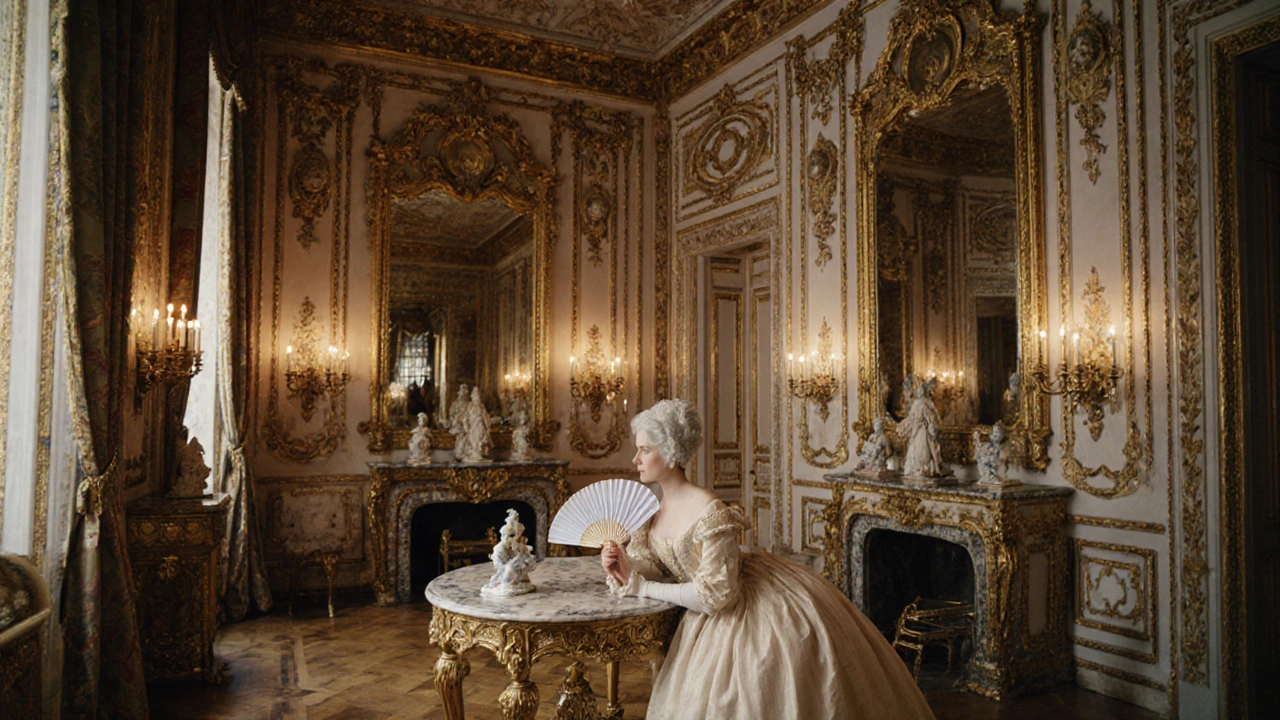
What Makes Rococo Different From Baroque and Neoclassicism
It’s easy to confuse Rococo with Baroque. Both use gold. Both are ornate. But here’s the difference:
- Baroque is dramatic. It wants you to kneel. Think Caravaggio’s intense shadows, Bernini’s twisting saints, the overwhelming scale of St. Peter’s Basilica.
- Rococo is intimate. It wants you to lean in. It’s about the glance, the smile, the hidden note.
- Neoclassicism is cold. It wants you to think. Marble, columns, symmetry, and moral lessons. Think Jacques-Louis David’s Oath of the Horatii-no softness, no curves, no giggles.
Rococo sits between them-not as a transition, but as its own world. A world where beauty was meant to be felt, not preached.
Where to See Rococo Today
If you want to experience Rococo without a time machine, here’s where to go:
- Palace of Versailles, France - The Petit Trianon, built for Madame de Pompadour, is pure Rococo. Light, airy, perfect.
- Wieskirche, Germany - A pilgrimage site that looks like heaven had a sugar rush.
- The Wallace Collection, London - Over 100 Fragonard and Boucher paintings in a mansion that feels like a dream.
- The Frick Collection, New York - A Gilded Age mansion filled with Rococo masterpieces, right next to Central Park.
- Amalienburg Pavilion, Munich - A hunting lodge turned into a porcelain fantasy.
You don’t need to be an art historian to feel it. Just walk in. Look up. Let the curves wrap around you. Listen to the silence between the gold. That’s Rococo speaking.
What is the difference between Rococo and Baroque art?
Baroque art is grand, dramatic, and often religious or political in tone. It uses strong contrasts, deep shadows, and monumental scale to inspire awe or fear. Rococo, by contrast, is small-scale, playful, and focused on pleasure. It favors soft pastels, curved lines, and intimate scenes-like flirtations, garden parties, and mythological romances. Where Baroque shouts, Rococo whispers.
Why was Rococo considered frivolous?
By the late 18th century, Rococo’s focus on luxury, decoration, and leisure clashed with rising Enlightenment ideals. Thinkers like Rousseau criticized the aristocracy for indulging in beauty while the poor suffered. When the French Revolution began, Rococo became a symbol of excess and moral decay. Its softness was seen as weakness, its beauty as distraction. It wasn’t just out of style-it was politically dangerous.
Who were the main artists of the Rococo movement?
Jean-Antoine Watteau pioneered the style with his poetic scenes of love and leisure. François Boucher became the most prolific, painting hundreds of mythological and pastoral scenes with delicate colors. Jean-Honoré Fragonard pushed the boundaries with playful, almost erotic compositions like The Swing. In sculpture, Étienne-Maurice Falconet brought Rococo’s grace into three dimensions with works like Psyche Revived by Cupid’s Kiss.
Did Rococo influence modern design?
Absolutely. Modern interior design still uses Rococo’s love of curves, pastel palettes, and ornamental detail-just in a more restrained way. Think of curved headboards, gilded mirrors, floral wallpaper, and delicate chandeliers. Fashion designers regularly reference Rococo in lace, ruffles, and embroidery. Even branding and product design borrow its sense of playful elegance.
Is Rococo still relevant today?
Yes-not as a dominant style, but as a mood. In a world of minimalism and digital overload, Rococo offers something rare: indulgence without guilt. It reminds us that beauty doesn’t always have to be serious. That decoration can be joyful. That art doesn’t have to teach a lesson to be valuable. People are rediscovering it in boutique hotels, luxury interiors, and even TikTok aesthetics. Rococo isn’t back-it never left.

